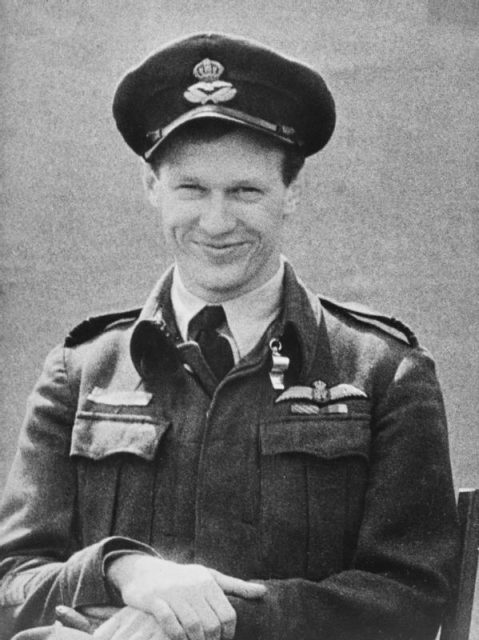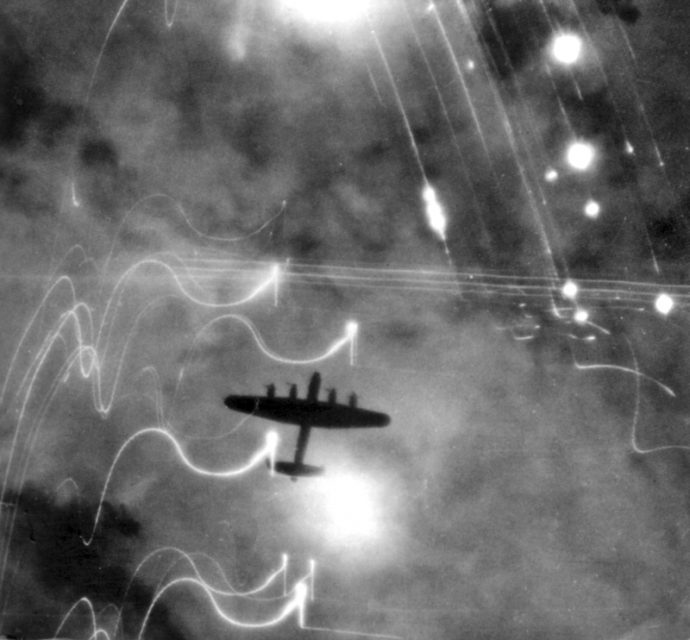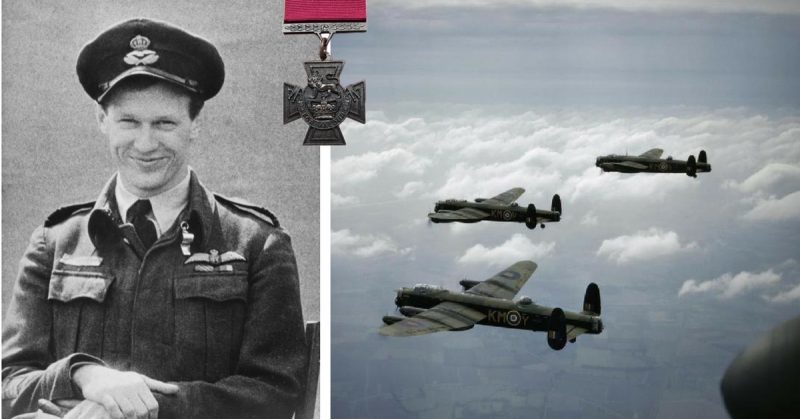When an Allied plane took to the skies headed for occupied Europe in WWII, there existed the reasonable probability the crew would not make it back alive. Each time a pilot took flight, the odds went up. The recognition that the statistical likelihood would catch up with everyone sooner or later led the Allies to establish various quotas. Completing a specified number of missions, and an airman could ride out the war as an instructor or in some other billet.
For Ian Willoughby Bazalgette, he took another route. Despite having completed a successful tour of operations and receiving the Distinguished Flying Cross, he seemed destined to fight the odds. He started out dropping mines over the north sea and eventually found his way to the skies of Germany, including Berlin. Each time he returned. On D-Day, he could be seen above France doing his worst upon the enemy.
However, it was on Bazalgette’s 58th mission when statistical probability caught up with him. While leading a run against V-2 rocket storage caves, his bomber was hit by a devastating burst of anti-aircraft fire. Ordering his crew to bail out if they were able, he did his best to bring the plane and its wounded to the ground. On his 58th mission, Ian Willoughby Bazalgette died in a fiery explosion but not before he was awarded his nation’s highest military honor.
Born to Take to the Skies
Ian Willoughby Bazalgette was born in 1918 Calgary, Alberta, just as the world was wrapping up from the horrifying years of WWI. With peace at hand, Bazalgette and his family moved to England where he attended various schools. Despite struggling with a bout of clinical tuberculosis at a young age, Bazalgette grew up healthy and ready for the next great war.
Coming of age just as the world was yet again entering a conflict, Bazalgette enlisted in the Royal Artillery. In 1940, he was commissioned a second lieutenant. He initially served as an instructor on searchlights, before making his way to the Royal Air Force Volunteer Reserve. Bazalgette was determined to become a pilot but could not have known in doing so; he would hold a place in military history.
Seemingly a natural at flying, Bazalgette had obtained the rank of Pilot Officer by January 1942, and his sortie count began. Initially placed in an Operational Training Unit, by September 1942 he was flying a Vickers Wellington Bomber and headed for action. His role was to fly out over the North Sea and drop mines from above. While the mission seemed relatively mundane, the risk of German interception did exist. After 13 missions over the North Sea, the stakes were upped.

To Berlin and Back
In 1943, Bazalgette was given an Avro Lancaster heavy bomber. It was then he fought the statistical probability of not returning, time and time again. He flew over some of the most heavily defended areas in Europe including Kiel; St. Nazaire; Essen and Berlin itself. Enemy fighters, daunting barrages of anti-aircraft fire and a crash landing or two did not take Bazalgette down. In May 1943 he was awarded the Distinguished Flying Cross for courage and determination.
For Bazalgette, the magic number was 28 operations. “Baz” as he had become known was posted to Scotland as an instructor. War, however, had a different path for him. In 1944 he was recruited to join the elite Pathfinder Force. His job was to help guide and mark targets for the primary bombing force for the Allied invasion of Europe. Again, he was in the middle of the action, but Bazalgette had not been impressed with his safe instructor duties.
In June 1944, Bazalgette and the other elite Pathfinders were doing their worst upon the enemy in and around Normandy. His mission count began to rocket into the 30s and 40s as Bazalgette seemed to beat the statistics. However, on his 58th flight over the skies of France, his lucky streak came to an end.

One Final Flight
On August 4, 1944, Bazalgette was guiding the path for Allied aircraft towards V-1 rocket caves near Trossy St. Maximin, France. Leading from the front as always, his Lancaster bomber took a withering burst of anti-aircraft fire. Both engines on his starboard side were disabled, and fire began to rage through the aircraft. Some people would have seen it as a sign to turn for home, but Bazalgette was aware the deputy master bomber had already been taken out of the action. The result of the raid fell to the man with 57 missions under his belt.
Continuing, and piloting the plane with great skill, Bazalgette arrived on target and was able to mark the location for the rest of the aircraft successfully. However, things for him went from bad to worse.
An engine on his port side gave way sending the aircraft into a spiraling descent. Miraculously, he was able to steady the plane. Bazalgette ordered all those who were physically able to bail out. He then attempted a crash landing in an attempt to save the remaining two crewmen who were wounded. Despite great skill and courage, when the aircraft hit the ground it burst into flames killing all on board.
For his actions that day on his 58th mission, Ian Willoughby Bazalgette was awarded the Victoria Cross and the eternal respect of every pilot to take to the skies with him. He was buried in a churchyard near Beauvais, France, where his grave remains to this day.
Ian Willoughby Bazalgette could not beat the statistical probabilities, but he did receive a rare military honor and a hallowed place in the halls of military history.
